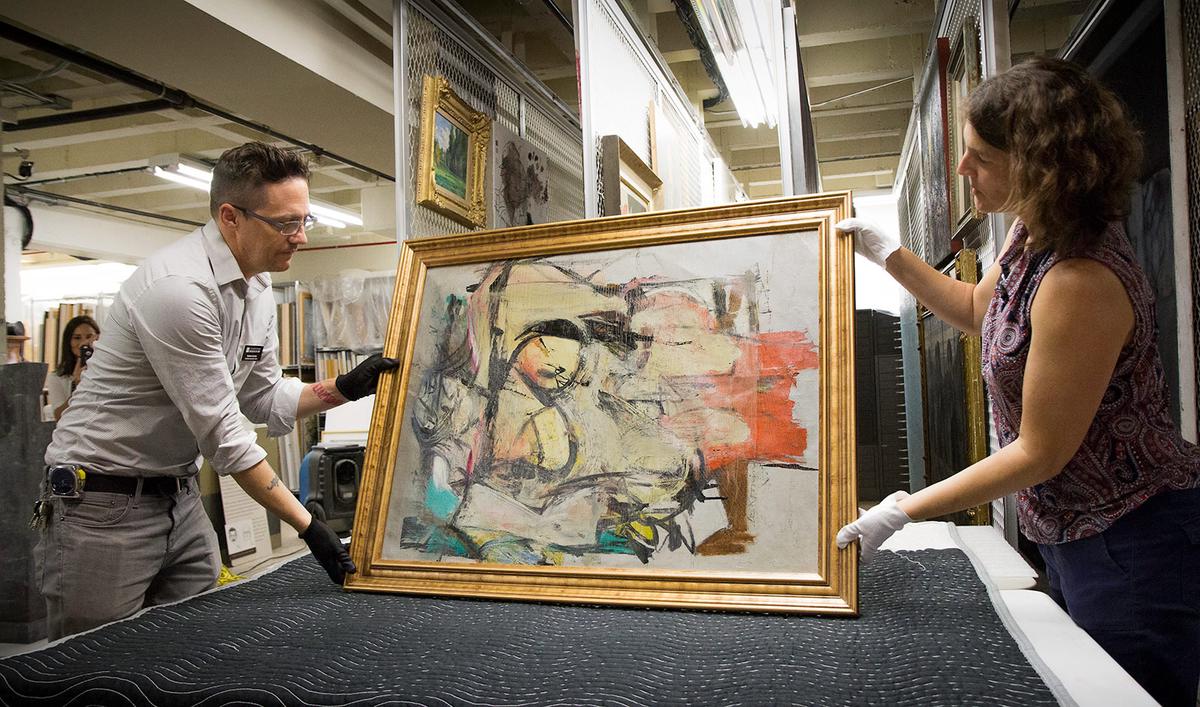The Theft of Van Gogh's Masterpiece
On March 30, 2020, a daring theft occurred at the Singer Laren museum near Amsterdam. Taking advantage of reduced security during the COVID-19 lockdown, a thief broke in and targeted Vincent van Gogh's The Parsonage Garden at Nuenen in Spring, a painting valued between €3m-€6m. Despite a swift response from authorities, the burglar successfully escaped with the artwork.
The stolen painting, created in 1884, depicts the back garden of Van Gogh's father's parsonage in Nuenen. It showcases Van Gogh's early dark tones and features a solitary woman walking away. Interestingly, the artist transformed what was originally a winter scene into a spring garden, a change evident in an ink sketch he gave to a friend.
The Recovery
Three years after the theft, Arthur Brand, a renowned art detective, received the stolen Van Gogh at his Amsterdam apartment. The painting arrived in an unusual package:
- Wrapped in a pillowcase
- Inside an IKEA bag
- Showing signs of damage from its time in the criminal underworld
Andreas Blühm, director of the Groninger Museum, confirmed the painting's identity and secured it. Despite the physical damage, the artwork's artistic and historical value remained intact. Senior researcher Teio Meedendorp expressed optimism about restoring the masterpiece.
The painting later made its media debut at a Rotterdam museum, where conservator Marjan de Visser began the restoration process. Soon, the public will have the opportunity to view this recovered piece when it goes on display at the Groninger Museum.
This incident serves as a stark reminder of the vulnerabilities in the art world, especially during unprecedented times like the COVID-19 pandemic.
Arthur Brand's Pursuit
Arthur Brand's pursuit of The Parsonage Garden at Nuenen was a testament to his dedication and skill. His involvement began shortly after the theft, describing it as a "personal insult" that such a crime could happen in the Netherlands.
After years of investigation, Brand's breakthrough came when a mysterious contact reached out. He recounted:
"Eventually, I got contacted by somebody who said: 'Mr. Brand, I could turn in the Van Gogh, but I don't want to get into trouble.' I had to gain his confidence."
The Dutch police played a crucial role in the recovery. Officer Richard Bronswijk confirmed, "Arthur Brand, in cooperation with the Dutch police, has solved this matter. This is definitely the real one, there's no doubt about it."
The Handover
The handover at Brand's apartment was a mix of suspense and anticlimax. The valuable painting arrived in a battered pillowcase inside an Ikea bag. "It's him. Vincent van Gogh is back. What a day," Brand declared with relief.
Initial inspection revealed the painting had survived relatively well, thanks to its linen backing. However, restorer Marjan de Visser noted significant damage:
"I would call this a severe one because it goes through all the layers, the varnish, the paint layers, and then into the ground layer, which is white."
Museum officials expressed both joy and caution. Andreas Blühm, director of the Groninger Museum, described the emotional journey:
"You always imagine this moment and there were moments when we thought it was getting closer but it didn't happen, so we were quite traumatized by disappointments. And then you say: 'I only believe it when I see it in the flesh.'"
This recovery highlights the importance of individuals like Brand in combating art crime. While museums work to protect their treasures, the human element often bridges gaps that technology alone can't fill.
Arthur Brand: The "Indiana Jones of the Art World"
Arthur Brand's reputation as the "Indiana Jones of the art world" is well-earned. His career includes recovering high-profile pieces such as Pablo Picasso's Buste de Femme and the bronze statues known as "Hitler's Horses."
In the world of art theft, stolen masterpieces often become "hot potatoes," too risky to sell or even possess. Brand frequently deals with individuals who have inadvertently acquired stolen art and are desperate to return it without legal consequences.
The Significance of the Recovery
The recovery of The Parsonage Garden at Nuenen is significant in the context of art theft history. Van Gogh's works are among the most recognizable and sought-after, making this heist and subsequent recovery particularly noteworthy.
Art theft remains a global issue, with staggering statistics:
- Over 50,000 pieces of art are stolen annually, according to Interpol estimates
- The industry involves complex networks of smugglers, forged documents, and complicit dealers
- Selling instantly recognizable works by artists like van Gogh or Picasso is virtually impossible without raising suspicion
For Brand, each recovered masterpiece represents both a personal and cultural triumph. His methods, rooted in patience and an understanding of the art world's underbelly, set him apart from his peers. His work serves as a reminder that even when security systems fail, human ingenuity and perseverance can often save the day.
The recovery of The Parsonage Garden at Nuenen adds another chapter to the ongoing story of art theft and recovery. It highlights the constant struggle between those who would steal our cultural heritage and those dedicated to protecting and recovering it.

- Interpol. Works of Art Statistics. 2021.
- Brand A. Hitler's Horses: The Incredible True Story of the Detective who Infiltrated the Nazi Underworld. Ebury Press; 2021.
- Charney N. Art Crime: Terrorists, Tomb Raiders, Forgers and Thieves. Palgrave Macmillan; 2016.

























